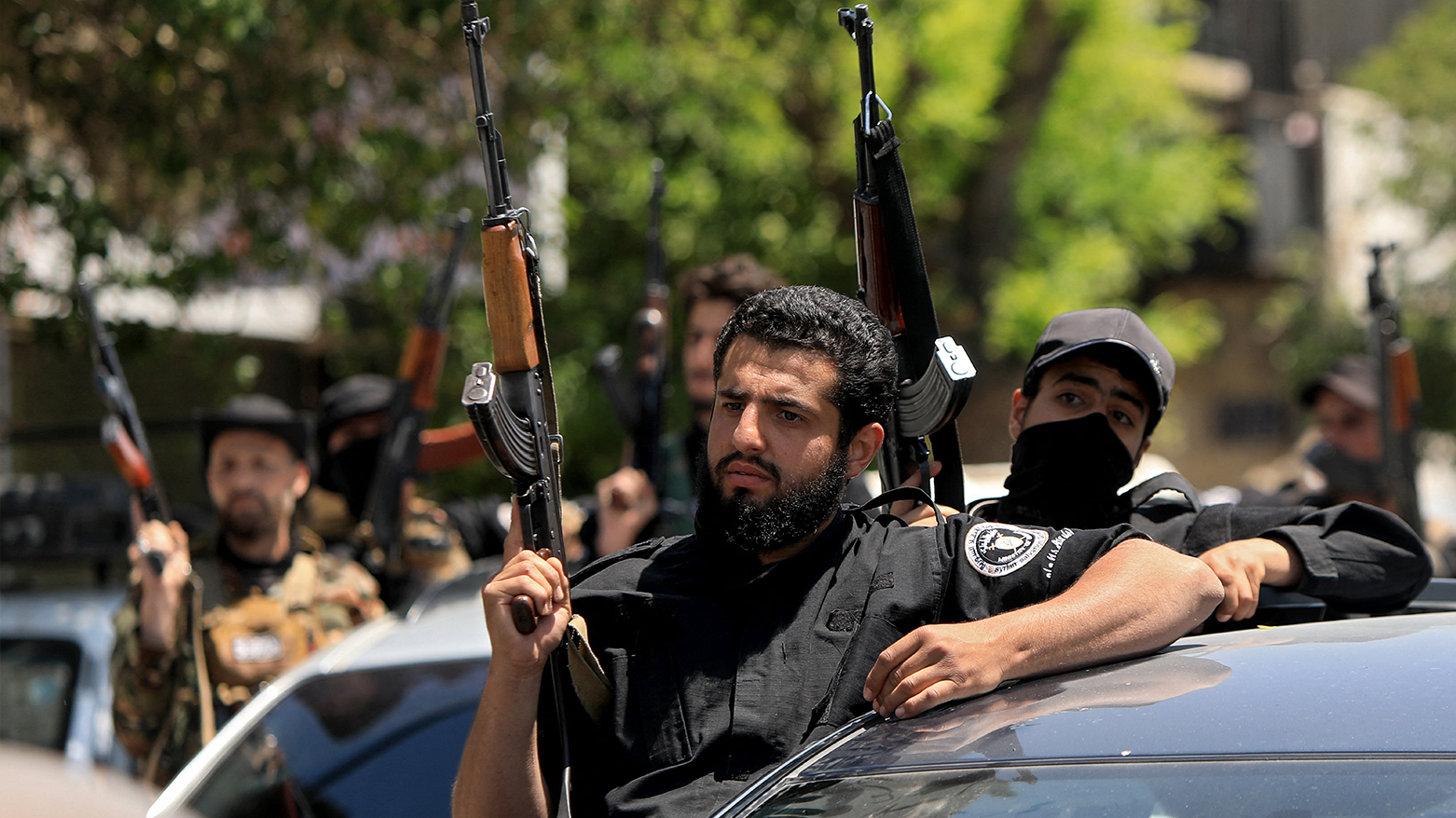14 Killed in Sectarian Clashes in Jaramana as Syria’s New Leadership Struggles to Contain Unrest
The deadly unrest also comes just over a month after brutal intercommunal violence in Syria’s coastal regions claimed nearly 1,700 lives, mostly from the Alawite community.

By Ahora Qadi
ERBIL (Kurdistan 24) – At least 14 people, including seven local Druze gunmen, were killed in overnight sectarian-fueled clashes in the city of Jaramana, southeast of Damascus, according to the UK-based Syrian Observatory for Human Rights (SOHR). The deadly unrest, which erupted late Monday into Tuesday, underscores the mounting challenges facing Syria’s transitional authorities under President Ahmed al-Sharaa, following the ousting of Bashar al-Assad last December.
The violence came in response to the circulation of an audio recording, allegedly from a Druze man, containing insults to the Prophet Muhammad, sparking outrage and triggering retaliatory attacks.
Security Response and Government Reaction
Syria’s Ministry of Interior confirmed the deployment of a security cordon around Jaramana, acknowledging in a statement that “sporadic clashes” had occurred between armed groups “from inside and outside the area.” The ministry reported casualties, including among the security forces, and vowed to “pursue all those involved and hold them accountable under the law.”
The statement also confirmed that investigations were ongoing to identify the source of the offensive audio message, stressing the state’s commitment to protecting civilians and maintaining societal peace.
Religious Leaders Denounce Violence, Warn of Escalation
The Druze religious authority in Jaramana denounced the assault as “unjustified aggression,” placing full responsibility on state institutions for their failure to prevent the bloodshed. In a stern rebuke, they warned of further deterioration unless the government upholds its duties to safeguard lives and prevent sectarian escalation.
In a joint statement, Sheikh Yusuf Jerbooa and Sheikh Hammoud al-Hanawi, two senior Druze clerics, described the events as a deliberate “sectarian provocation”, accusing “mercenary elements” of exploiting religious sensitivities to “fragment the national Syrian fabric.”
Prominent spiritual leader Sheikh Hikmat al-Hijri echoed the condemnation, describing the incident as an “abhorrent terrorist assault against innocent civilians”, and linked the violence to the lingering legacy of Assad-era repression. He criticized the current administration for perpetuating “exclusionary governance” and failing to provide genuine national reconciliation.
Jaramana: A Flashpoint of Syria’s Sectarian Landscape
Jaramana, a district home to predominantly Druze and Christian communities, has long been considered a microcosm of Syria’s sectarian mosaic. The neighborhood also houses thousands of families displaced during the war that began in 2011.
The area has experienced recurrent instability since Assad’s fall in December 2024, when a coalition led by HTS seized power in Damascus. In March, HTS-aligned security forces entered Jaramana, leading to armed confrontations with local Druze fighters.
That flare-up prompted a warning from Israel, whose Defense Minister Yisrael Katz threatened military intervention should the Druze community come under systematic attack. Israel, home to around 150,000 Druze citizens, maintains close ties with the Druze in the occupied Golan Heights, where another 23,000 Druze reside and largely identify with Syria.
Escalating Unrest in Post-Assad Syria
Since the transition of power in Damascus, Syria has witnessed intermittent violence, arbitrary arrests, and human rights violations, according to local residents and rights monitors. The Jaramana clashes have once again exposed the fragility of the new leadership’s grip on power and the potential for sectarian flashpoints to spiral into broader conflict.
The deadly unrest also comes just over a month after brutal intercommunal violence in Syria’s coastal regions claimed nearly 1,700 lives, mostly from the Alawite community. Both episodes highlight the volatility gripping Syria’s fractured society amid the power vacuum left by the Assad regime’s collapse.